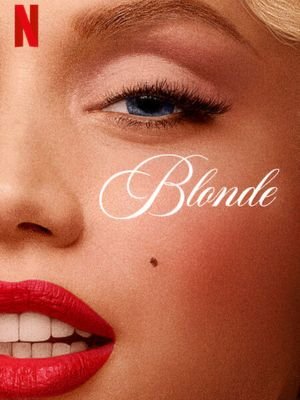
Andrew Dominik’s Blonde opens with child abuse and continues by presenting us with a rogues’ gallery of people who wronged Marilyn Monroe. These people range from the slightly condescending or normally sexist to those guilty of physical assault and rape.
Inserted between these vignettes of misery are immaculate reconstructions of famous or relevant moments from Monroe’s films — scenes like Addison DeWitt in All About Eve advising Monroe’s wannabe-actor character to go and make a producer very happy if she wants to get ahead in showbiz. These scenes are eerie and gorgeous, possibly forming an art project on their own, like Gus Van Sant’s mostly frame-for-frame 1998 Psycho remake. There are also moments of stunning erotic surrealism, such as a threesome shot as an elegantly warped kneading of flesh into strange new shapes, like the sexy version of the climax of Brian Yuzna’s Society.
The film is based on the book by Joyce Carol Oates, but obviously a book can’t have cinematic reconstructions, visual trickery or music (Nick Cave and Warren Ellis’ elegant score evokes Angelo Badalamenti’s work on Twin Peaks, to great effect). The book does have all the misery and abuse while trying to show us more light alongside shade and inside Monroe’s ambition. She was intelligent; she worked hard at being famous through various means – however Blonde is fuzzy about her path to stardom, preferring instead to represent her as a butterfly that gets broken on wheel after wheel throughout time.
A biopic should not try create an objective photocopy of its subject; no one person could be comprehensively represented in any medium. Choices must be made. What a good biopic needs do is decide which angle they want take. This film paints picture litte girl lost repeatedly calling lovers ‘Daddy’ whilst reacting almost every new disappointment with same tremulously teary ingénue pout: it presents a portrait where Monroe is concerned. Ana de Armas’ performance is strong but her wings were clipped; there’s only so much across hefty runtime that we see Monroe growing from what happens to her .
Maybe the visual Marilyn image is too powerful — who would want to take it apart? While a book could talk about how Marilyn existed as separate entity from Norma Jeane, and allow us picture real woman prior stepping on set, cinema being visual medium must decide whether show this or not, and Dominik chooses show us flawless looking Marilyn in every shot, however utterly opposed or alienated Norma Jeane might feel towards her screen persona at that moment in time; more concerned with sensual surfaces than interior lives, Blonde remains elusive.
Also, Read On Fmovies
